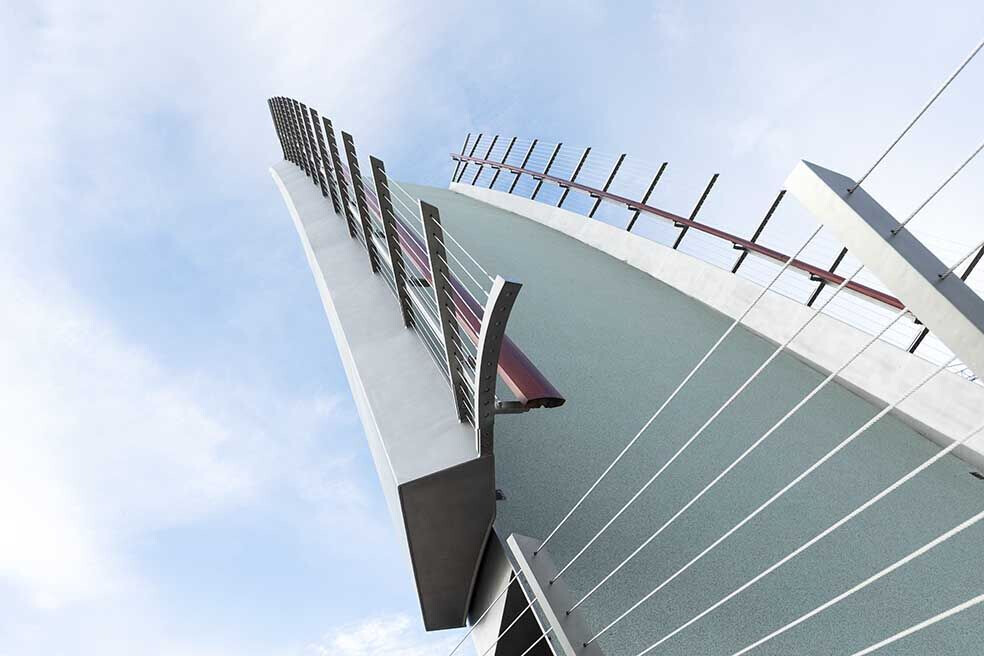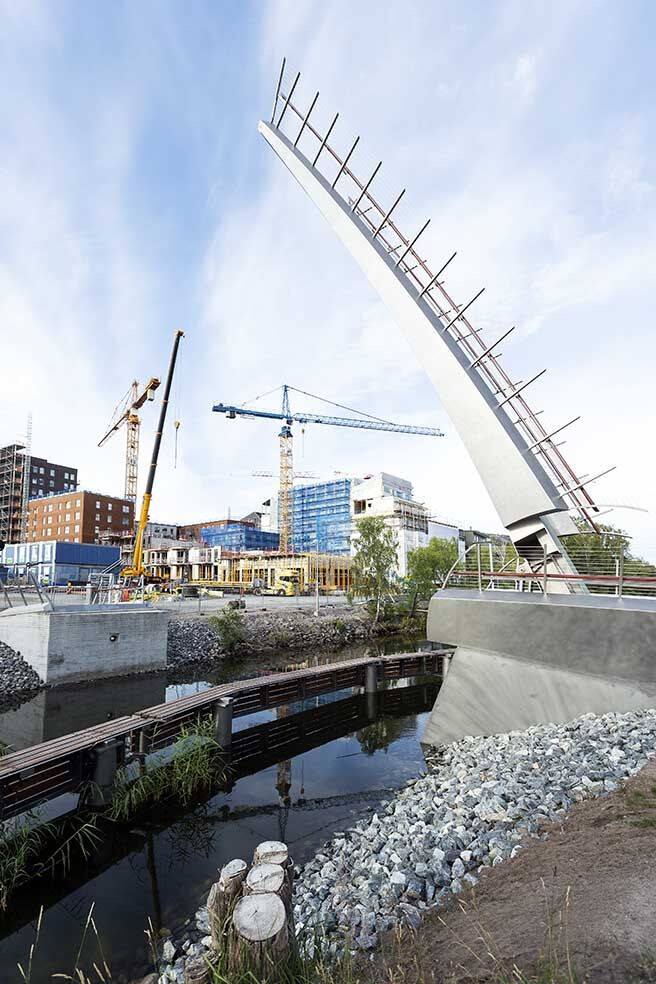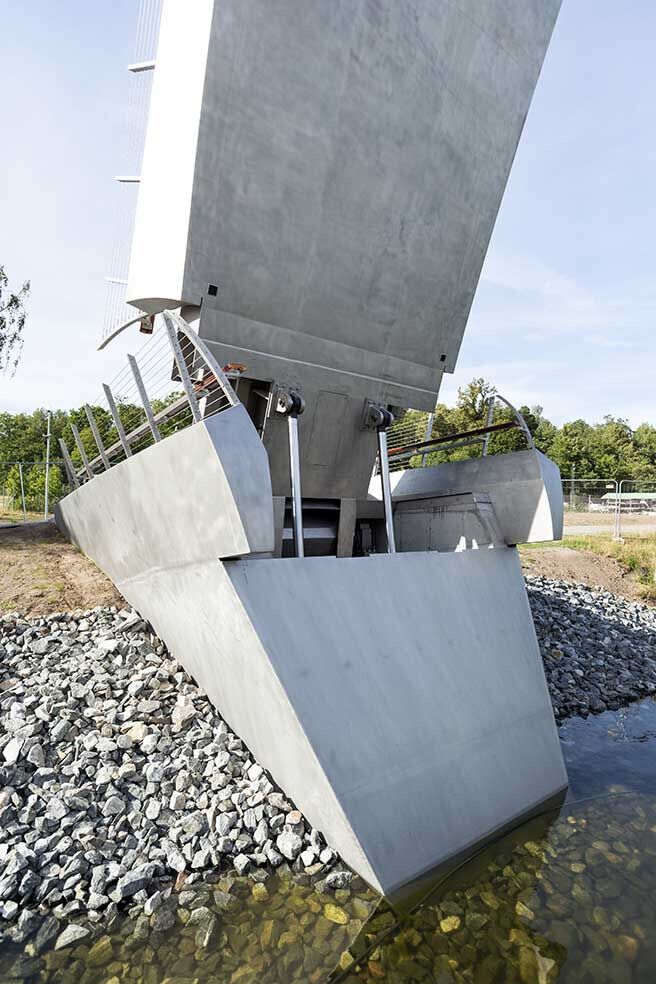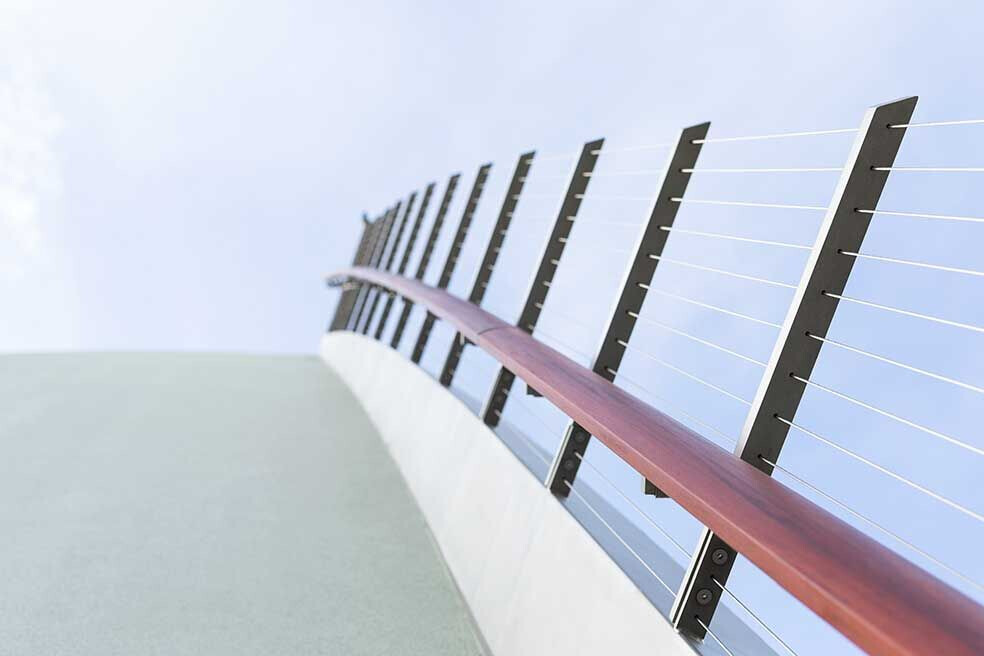Husarviksbron is a moveable pedestrian and bicycle bridge that spans over an inlet in a former industrial area, newly developed into a residential area in the central part of Stockholm. The bridge works as an important connection between the residential area in the south and the green area Royal National park (Norra Djurgården) in the north, and it creates new connectivity opportunities, such as regional cycle paths.

Rundquist architects were already engaged in 2004 to develop a proposal for an openable pedestrian and bicycle bridge, in this very sensitive location - a process with the city's various administrations and with the Royal Djurgården Administration. The bridge location could be derived from older maps, from the 17th century to the 19th century, where there are bridge connections marked in the same location.

The bridge is designed as a single and coherent unit, as cut out of a single piece of material, almost without details and made entirely of stainless steel. The contrast between the uneven and wildly grown slopes of the south facing bank of Husarviken and the urbanizing quay is taken advantage of by the asymmetry of the bridge. The abutment on the south facing bank transitions without any visible joint into the smoothly arched deck. The sides of the bridge are angled outwards to catch the reflections from the water and create an overall feeling of lightness. The final design was approved by the King's Council in 2007.

The width of the bridge is 4 m and it has a total length of 30,7 m with a 17 m bascule.
The opening is performed by two hydraulic cylinders pushing the bridge flap and making it rotate around the pivot axis having two turning shafts, resting on spherical plain bearings.



























